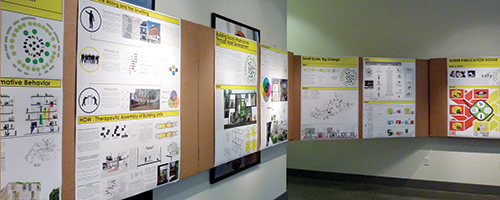On Saturday, May 12, postal workers across the United States picked up more than just letters and packages. It was the annual Stamp Out Hunger Food Drive, a program developed by the National Association of Letter Carriers to assist food banks in serving those in need. Along their routes, more than 200,000 mail carriers collected millions of pounds of non-perishable food donations in their trucks and bags.
Stamping out hunger
On Saturday, May 12, postal workers across the United States picked up more than just letters and packages. It was the annual Stamp Out Hunger Food Drive, a program developed by the National Association of Letter Carriers to assist food banks in serving those in need. Along their routes, more than 200,000 mail carriers collected millions of pounds of non-perishable food donations in their trucks and bags.
Although this year marks the national program’s 20th anniversary, the idea for the drive itself can be traced back to 1970s Eugene, where mail carriers originated the tradition. It eventually spread to Oregon City, and in the early 1990s, NALC’s Oregon State Association teamed up with national groups focused on hunger prevention. They launched a test run of the drive in Oregon and several other states. The following year, 1992, the project went nationwide.
Since then, the project has grown immensely. Last year, letter carriers collected 70.2 million pounds of food, raising the total amount of donations picked up over the history of the drive to more than 1.1 billion pounds. Stamp Out Hunger is now considered to be the largest one-day food drive in the world.
Still, it’s not enough. Lack of access to food remains a growing problem in the U.S. today. Unemployment and underemployment are way up, meaning wages are down. But food prices increased by 4.5 percent last year alone. Thus, many people are finding it increasingly difficult to maintain an adequate diet. According to NALC President Frederic Rolando, “16 percent of all Americans are at risk of hunger—uncertain where their next meal may be coming from.” That includes one in five children under the age of 18, plus four million seniors who are forced every day to choose between paying a utility bill and buying food.
To make matters worse, donations have been down in recent years compared to prior ones—most likely due to the national economic recession. In order to raise awareness and encourage contributions, NALC solicited a few corporate sponsors to help the project’s efforts. Campbell’s Soup donated 75 million reminder postcards to help drum up customer participation, and AARP provided more than 13.5 million special “Stamp Out Hunger” grocery bags for people to fill. Official tallies for the outcome of this year’s drive have yet to be completed or released.
Sadly, some (rich) people attempt to deny that hunger is even a problem at all. In April on his radio show, Sean Hannity, a Fox News personality who makes $10 million each year, said, “I don’t believe people are going to bed hungry…I’ve never gone to bed hungry in my life—ever.” He suggested that poorer families simply eat inexpensive rice and beans to “survive.”
Similarly, former Republican presidential nominee hopeful Rick Santorum, in a town hall meeting in Le Mars, Iowa, said some months ago, “If hunger is a problem in America, then why do we have an obesity problem among the people who we say have a hunger problem?” He was speaking of how he would cut government spending if he were commander-in-chief. One of the main areas he would target, he said, were food stamps, because poor people aren’t hungry—they’re obese and apparently need to lose weight anyway.
In reality, hunger and obesity can and do coexist as problems concentrated among poorer Americans. When they can afford food, people on a tight budget tend to buy things that fill them up faster and last longer. These include foods that are high in fat, cholesterol, etc. Also, “healthy” and “whole” foods are generally more expensive than their processed, full-of-corn-syrup counterparts. In many urban areas, there aren’t even any markets from which to buy fresher foods anyway; the only things available are unhealthy, obesity-causing convenience goods.
Whether the perspectives of Sean Hannity and Rick Santorum betray actual ignorance or represent shameless political spin remains a mystery of the universe. Either way, remarks like this are a huge problem because both of these people hold enormous influence over the opinions of actual constituents. There is already too pervasive a sentiment among the middle and upper classes that those in poverty somehow deserve to be where they are (they don’t). Denial of hunger is a serious problem, and badmouthing social safety net programs add dangerous fuel to that fire.
Nevertheless, the evolution of the Stamp Out Hunger Food Drive from a local effort in Eugene to the largest one-day food drive in the world is inspirational. It shows how small changes can become big changes—how grassroots efforts can make widespread difference.
Here at home, the Oregon Food Bank, which coordinates distribution for about 20 regional food banks, is counting on the postal food drive to help address their three million pound decrease in donations since last year. They currently feed about 260,000 people per month, presumably none of whom are related to either Sean Hannity or Rick Santorum.



